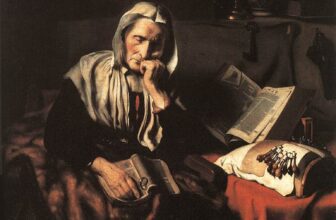
Did King Louis live at the Louvre?
The story of the Louvre begins in the late 12th century when King Philip II (Philip Augustus) constructed a fortress on the site to defend Paris against potential invasions. This medieval structure, known as the Louvre Castle, was a strategic stronghold designed with a massive keep, a surrounding moat, and thick walls. While it served primarily as a military and administrative center, its significance to the monarchy would grow over the centuries.
In the 14th century, under the reign of King Charles V, the Louvre underwent a significant transformation. Charles V converted the fortress into a royal residence, incorporating sumptuous apartments, ornate decorations, and a library. This marked the beginning of the Louvre’s dual role as both a defensive structure and a symbol of royal authority and culture.
The Reign of the Louis Kings and the Louvre
Between the 14th and 18th centuries, France was ruled by several kings named Louis, from Louis VI to Louis XVI. Each had varying relationships with the Louvre, shaped by their individual preferences, political ambitions, and the changing dynamics of French court life.
Louis IX (Saint Louis) and the Louvre
Although Louis IX reigned during the 13th century, before the Louvre became a royal residence, his influence on French culture and governance indirectly impacted its later development. Known for his piety and dedication to justice, Louis IX commissioned architectural projects like Sainte-Chapelle, which set a precedent for the grandeur of royal constructions. While he did not reside at the Louvre, his era laid the groundwork for Paris’s emergence as a center of royal power.
Louis XIV and the Move to Versailles
One of the most significant Louis monarchs in the context of the Louvre is Louis XIV, the Sun King. Initially, Louis XIV used the Louvre as a royal residence during his early reign. However, he found the palace insufficient for his vision of absolute monarchy and the grandeur he sought to project. Consequently, he initiated the construction of the Palace of Versailles, which became the primary royal residence in 1682.
Before Louis XIV’s departure, the Louvre had undergone extensive renovations and expansions under architects such as Pierre Lescot and Louis Le Vau. These enhancements included the creation of the Cour Carrée and the addition of classical facades, transforming the medieval fortress into a Renaissance palace. Despite these improvements, Louis XIV’s move to Versailles marked a turning point, relegating the Louvre to a secondary role in the monarchy’s daily life.
Louis XV and Louis XVI: The Decline of the Louvre as a Royal Residence
Under Louis XV and Louis XVI, the Louvre continued to lose prominence as a royal residence. Versailles remained the epicenter of court life, while the Louvre’s vast halls and chambers were repurposed for other uses, including housing artists, scholars, and royal academies. During Louis XVI’s reign, the Louvre began to evolve into a public institution. The French Revolution, which brought an end to Louis XVI’s monarchy, also catalyzed the transformation of the Louvre into a museum.
Did Any King Louis Live at the Louvre?
To answer this question directly: Yes, several kings named Louis either lived at or used the Louvre at different points in its history. However, their relationships with the Louvre varied widely. For instance, Louis IX predated its conversion into a royal residence, Louis XIV abandoned it for Versailles, and later monarchs largely neglected it as a living space.
The Louvre After the Monarchy
The French Revolution marked a dramatic shift in the Louvre’s role. In 1793, during the revolutionary government, the Louvre was officially established as a museum, showcasing art confiscated from the monarchy, the Church, and aristocratic estates. This transformation symbolized the democratization of culture and the end of its exclusive association with royal privilege.
Napoleon Bonaparte further expanded the Louvre’s collections during his reign, amassing treasures from across Europe. Although Napoleon styled himself as an emperor, he did not reside at the Louvre, using it instead to glorify his rule through art and architecture. His contributions solidified the Louvre’s status as a repository of world heritage.
Legacy of the Louvre’s Royal Past
Today, remnants of the Louvre’s royal history are still visible. The medieval foundations of the original fortress can be seen in the museum’s basement, while the opulent decorations of the Grand Galerie and other sections reflect its Renaissance and Baroque transformations. The Louvre’s royal apartments, particularly those of Anne of Austria, provide a glimpse into its life as a palace.
The kings named Louis, particularly Louis XIV, played pivotal roles in shaping the Louvre’s architectural and cultural evolution. Their decisions, whether to inhabit, expand, or abandon the Louvre, reflect broader trends in French history, from medieval feudalism to the centralization of royal power and the rise of republican ideals.
In summary, the Louvre’s history is deeply intertwined with the lives of France’s monarchs, including several named Louis. While it served as a royal residence for some, it was ultimately overshadowed by the grandeur of Versailles and transformed into a symbol of public access to art and culture. The story of whether King Louis lived at the Louvre is not just a tale of individual kings but a reflection of France’s evolving political, cultural, and architectural landscape.




